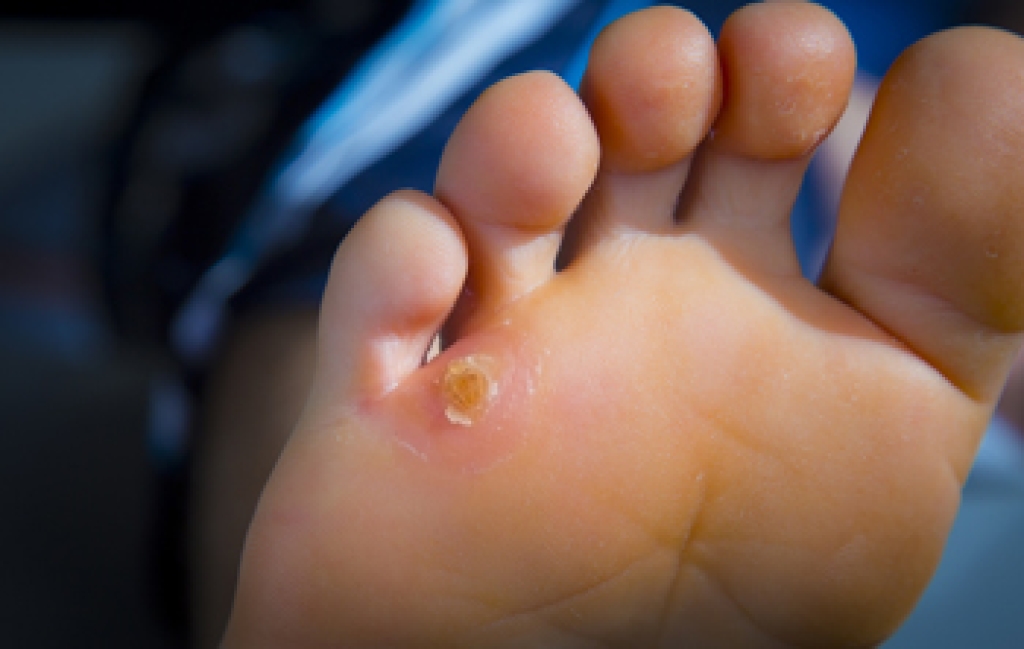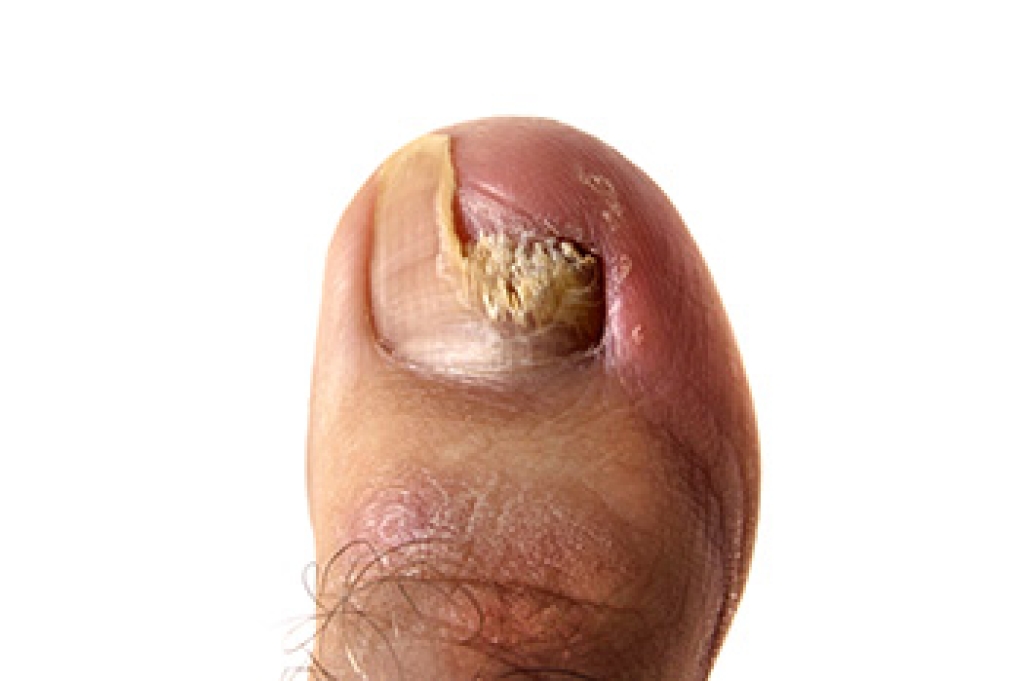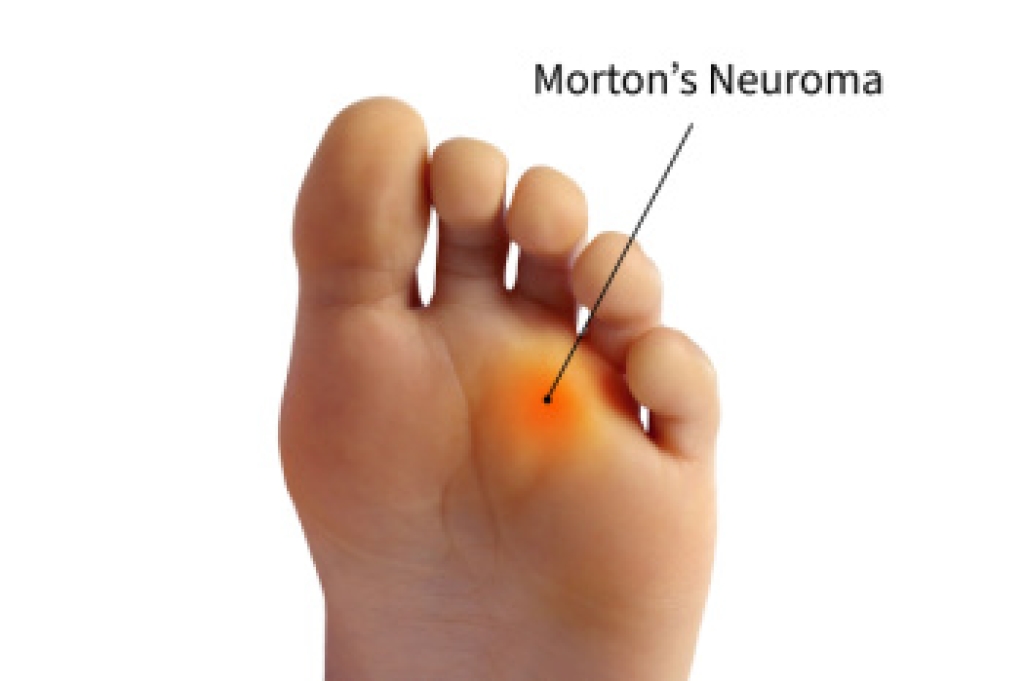Blog
Understanding and Treating Painful Foot Corns

Foot corns are small, hardened areas of skin that develop from repeated pressure or friction, often caused by wearing tight shoes or abnormal foot structure. They commonly form on the tops or sides of toes or on weight-bearing areas of the foot. While corns are the body’s way of protecting itself, they can become painful and make walking difficult. Wearing properly fitted shoes with adequate toe space, using protective pads, and keeping the skin moisturized can help prevent their return. Never try to cut or remove a corn at home, as this can lead to infection, especially in people with diabetes or poor circulation. If you have a persistent or painful corn, it is suggested that you schedule an evaluation by a podiatrist, who can safely remove the thickened skin, identify the underlying cause, and recommend footwear or orthotic adjustments to relieve pressure and keep feet healthy.
If you have any concerns regarding your feet and ankles, contact Yacara Tabb, DPM of Optimum Foot Care. Our doctor will treat your foot and ankle needs.
Corns: What Are They? and How Do You Get Rid of Them?
Corns can be described as areas of the skin that have thickened to the point of becoming painful or irritating. They are often layers and layers of the skin that have become dry and rough, and are normally smaller than calluses.
Ways to Prevent Corns
There are many ways to get rid of painful corns such as wearing:
- Well-fitting socks
- Comfortable shoes that are not tight around your foot
- Shoes that offer support
Treating Corns
Treatment of corns involves removing the dead skin that has built up in the specific area of the foot. Consult with Our doctor to determine the best treatment option for your case of corns.
If you have any questions, please feel free to contact our office located in Slidell, LA . We offer the newest diagnostic and treatment technologies for all your foot care needs.
The Hidden Struggles of Fungal Toenails

Fungal nails, medically known as onychomycosis, are caused by fungi infecting the nail bed. This is often due to warm, moist environments, poor foot hygiene, or minor nail injuries. Symptoms typically include thickened, discolored nails that may appear yellow, white, or brown. The toenails can become brittle, crumbly, or distorted, sometimes accompanied by a foul odor. Although fungal nails are often painless, they can cause discomfort when wearing shoes or walking. A podiatrist can accurately diagnose fungal toenail infections through a physical examination and laboratory testing. Treatment options include topical antifungal medication, oral antifungal drugs, or professional nail debridement to remove infected tissue. Because fungal toenail infections can worsen over time and spread to other nails, early diagnosis and treatment are important. To protect your toenail health and prevent further complications, it is suggested that you make an appointment with a podiatrist.
If left untreated, toenail fungus may spread to other toenails, skin, or even fingernails. If you suspect you have toenail fungus it is important to seek treatment right away. For more information about treatment, contact Yacara Tabb, DPM of Optimum Foot Care. Our doctor can provide the care you need to keep you pain-free and on your feet.
Symptoms
- Warped or oddly shaped nails
- Yellowish nails
- Loose/separated nail
- Buildup of bits and pieces of nail fragments under the nail
- Brittle, broken, thickened nail
Treatment
If self-care strategies and over-the-counter medications does not help your fungus, your podiatrist may give you a prescription drug instead. Even if you find relief from your toenail fungus symptoms, you may experience a repeat infection in the future.
Prevention
In order to prevent getting toenail fungus in the future, you should always make sure to wash your feet with soap and water. After washing, it is important to dry your feet thoroughly especially in between the toes. When trimming your toenails, be sure to trim straight across instead of in a rounded shape. It is crucial not to cover up discolored nails with nail polish because that will prevent your nail from being able to “breathe”.
In some cases, surgical procedure may be needed to remove the toenail fungus. Consult with your podiatrist about the best treatment options for your case of toenail fungus.
If you have any questions please contact our office located in Slidell, LA . We offer the newest diagnostic and treatment technologies for all your foot and ankle needs.
Understanding Morton’s Neuroma

Morton’s neuroma is a painful condition that affects the ball of the foot, typically between the third and fourth toes. It is caused by a thickening of the tissue around one of the nerves leading to the toes, often due to repetitive stress, tight footwear, high heels, or abnormal foot structure. Symptoms include a sharp, burning pain in the forefoot, tingling or numbness in the toes, and the sensation of having a pebble or fold in the sock. The pain may worsen with walking or wearing shoes and may ease when the foot is at rest. A podiatrist can diagnose Morton’s neuroma through a physical examination, review of symptoms, and imaging tests if necessary. Treatment options include footwear changes, custom orthotics, corticosteroid injections, or in severe cases, surgical removal of the affected nerve. It is suggested that you make an appointment with a podiatrist to receive a proper diagnosis and begin effective treatment for lasting relief.
Morton’s neuroma is a very uncomfortable condition to live with. If you think you have Morton’s neuroma, contact Yacara Tabb, DPM of Optimum Foot Care. Our doctor will attend to all of your foot care needs and answer any of your related questions.
Morton’s Neuroma
Morton's neuroma is a painful foot condition that commonly affects the areas between the second and third or third and fourth toe, although other areas of the foot are also susceptible. Morton’s neuroma is caused by an inflamed nerve in the foot that is being squeezed and aggravated by surrounding bones.
What Increases the Chances of Having Morton’s Neuroma?
- Ill-fitting high heels or shoes that add pressure to the toe or foot
- Jogging, running or any sport that involves constant impact to the foot
- Flat feet, bunions, and any other foot deformities
Morton’s neuroma is a very treatable condition. Orthotics and shoe inserts can often be used to alleviate the pain on the forefront of the feet. In more severe cases, corticosteroids can also be prescribed. In order to figure out the best treatment for your neuroma, it’s recommended to seek the care of a podiatrist who can diagnose your condition and provide different treatment options.
If you have any questions, please feel free to contact our office located in Slidell, LA . We offer the newest diagnostic and treatment technologies for all your foot care needs.
Unwanted Visitors on Your Feet

Plantar warts are small, rough growths that appear on the soles of the feet and are caused by the human papillomavirus, or HPV. They often develop in areas of pressure, such as the heel or ball of the foot, and may look like a thickened, callused patch of skin with tiny black dots in the center. Symptoms include pain or discomfort when walking or standing, tenderness, and sometimes itching. Plantar warts can be contagious and spread through direct contact with contaminated surfaces, such as public showers or swimming pools. A podiatrist can diagnose plantar warts through a physical exam and may perform tests to confirm the diagnosis. Treatment options include topical medications, cryotherapy, or minor surgical removal. Early treatment can prevent the warts from spreading or worsening. It is suggested that you make an appointment with a podiatrist to receive an accurate diagnosis and effective treatment for plantar warts.
Plantar warts can be very uncomfortable. If you need your feet checked, contact Yacara Tabb, DPM from Optimum Foot Care. Our doctor will assist you with all of your foot and ankle needs.
About Plantar Warts
Plantar warts are the result of HPV, or human papillomavirus, getting into open wounds on the feet. They are mostly found on the heels or balls of the feet.
While plantar warts are generally harmless, those experiencing excessive pain or those suffering from diabetes or a compromised immune system require immediate medical care. Plantar warts are easily diagnosed, usually through scraping off a bit of rough skin or by getting a biopsy.
Symptoms
- Lesions on the bottom of your feet, usually rough and grainy
- Hard or thick callused spots
- Wart seeds, which are small clotted blood vessels that look like little black spots
- Pain, discomfort, or tenderness of your feet when walking or standing
Treatment
- Freezing
- Electric tool removal
- Laser Treatment
- Topical Creams (prescription only)
- Over-the-counter medications
To help prevent developing plantar warts, avoid walking barefoot over abrasive surfaces that can cause cuts or wounds for HPV to get into. Avoiding direct contact with other warts, as well as not picking or rubbing existing warts, can help prevent the further spread of plantar warts. However, if you think you have developed plantar warts, speak to your podiatrist. He or she can diagnose the warts on your feet and recommend the appropriate treatment options.
If you have any questions, please feel free to contact our office located in Slidell, LA . We offer the newest diagnostic and treatment technologies for all your foot care needs.

